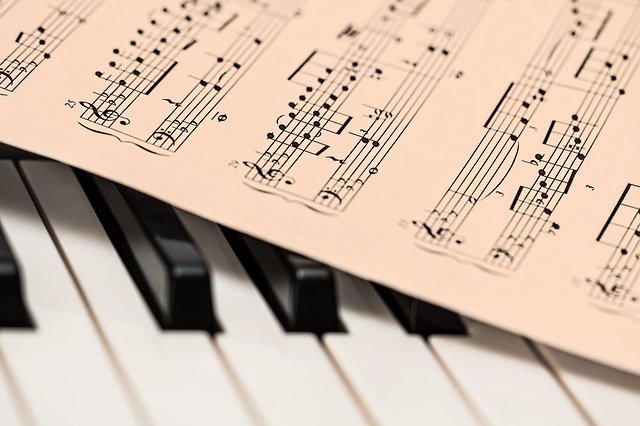MIND, BODY AND SOUL: The Magic of Music Therapy
“Music is … A higher revelation than all Wisdom and Philosophy”
–Ludwig Van Beethoven
To seek patterns in any occurrence is a human trait. It is no wonder then that pleasing patterns found in sounds are called music, the very food of the soul. With the ear being one of the first organs to develop, sound is the first sensation to be perceived by the fetus. Babies at birth can recognize not only the sound of the mother’s voice but also her heartbeat. Rhythm has always been a part of nature. It is not by accident that day, night, tides, seasons and circadian patterns of the human body follow a particular rhythm. This forms the basis of therapy using sound as the interventional tool.
With the discovery of flutes of ivory and bone dating as far back as forty-three thousand years, man is no stranger to music. It is no wonder then that music can influence the human mind and body to such an extent that it can have therapeutic effects itself or act as an adjuvant to conventional therapy in the treatment of certain ailments.
HISTORICAL BACKGROUND

Didgeridoo(Image Source: Thomas B. from Pixabay)
Music has been used as a healing tool throughout history. In ancient Greece, Apollo was the God of Medicine and Music. Most ancient cultures recognized and recorded the healing powers of music, the most notable being the Aborigines of Australia who used a healing tool called the Yidaki, or what we now call the Didgeridoo.
However, music therapy as we know it began in the aftermath of World Wars I and II, in the United Kingdom where benefits of playing music to soldiers suffering from emotional and physical trauma were first recorded.
Definition and Types
By definition, music therapy is an evidence-based clinical use of musical intervention to improve the quality of life of the patient.
There are two types of music therapy-
- RECEPTIVE: This form guides patients in listening to live or recorded music and is passive. It aids in improving mood, promoting relaxation and reducing stress levels and pain.
- ACTIVE: As the name suggests, the patients engage in some form of music-making –singing, playing instruments or even writing songs.
How Does it Work?

Image Source: Image by Steve Buissinne from Pixabay
Music therapy works by enhancing human capabilities through the planned use of musical influences on brain functioning. The brain, or more precisely the cerebrum, is the command centre where all senses and experiences are collated, processed, perceived, expressed and acted upon.

Image Source: https://www.medicalopedia.org/8970/healing-with-different-types-of-music-therapy/
Music is special because it is a sensory experience which can activate multiple areas of the brain simultaneously creating the potential for the development of new neural pathways. It triggers whole brain pathways and functioning which directly affect cognitive, emotional and physical functions and abilities, which in turn aid in rehabilitation, education and wellness programs. Since music can be personalized, it can be more effective than a mere sterile or generic procedure.
Areas of Benefit
Music therapy can be used across age groups. The benefits of music therapy in different age groups for different conditions are listed below:
- Neonates: Premature infants in the NICU derive the following benefits:
a) Better respiratory efforts and reduced distress
b) Better parental bonding
c) Stronger sucking reflex
d) Reduced pain perception
e) Improved sleep pattern
f) Reduction of complications in high-risk cases
g) Reduction of heart rates in neonates in cardiac units
2. Children

Image Source: https://positivepsychology.com/music-therapy/
a) Faster and better response to rehabilitation therapy
b) Enhancing sensorimotor development, lung function, speech clarity and
c) Balance in autistic children
3. Adolescents
Used in treating mood disorders, eating disorders, aggression, substance abuse, suicidal tendencies and withdrawal tendencies. Enhances self-confidence, self-esteem and improves communication skills.
4. Adults

Image Source: http://music-art-therapy.com/healing-music-therapy-2/
a) Patients of coronary artery disease show improvement in heart rate, respiratory rate and blood pressure.
b) Helpful in the recovery of motor skills, communication skills and reduction in post-therapy anxiety and depression in stroke patients.
c) In patients with dementia, there is an overall improvement in awareness, conversation, memorization and engagement with the surroundings. There is better bonding with caregivers and an improved sense of well being.
d) In cases of non-fluent aphasia resulting from damage to the left frontal lobe, patients who are unable to speak are often able to sing words and phrases vastly improving their communication skills. This is thought to occur due to whole-brain activation, especially of the right hemisphere.
e) Better physical and psychological outcomes have been observed in patients with cancer.
f) In schizophrenics, outcomes of treatment are much better in conjunction with music therapy rather than in isolation.
g) Better outcomes have also been observed in the management of anxiety and post-traumatic stress disorders.

Image Source: https://lifebeyondnumbers.com/rhythmic-healing-how-music-helps-in-addiction-recovery/
Thus, music therapy has proved to be beneficial in the management of many conditions of the human body and mind. While it cannot be a complete replacement of conventional therapy and research is still required to explore its new frontiers, it can be said that music perhaps succours the soul and therein lies its magic.
WHO IS A MUSIC THERAPIST?
Music therapists are specialists well versed in music and psychology working to provide specific care for certain conditions.
Music therapy is currently offered as a certificate course in India and most therapists are found attached to neurological departments of hospitals, de-addiction and rehabilitation centres and NGOs. They also play a role in schools for children with special needs and/ or disabilities, remand homes and specialised clinics for teenagers.
In most metropolitan cities, there are exclusive music therapy centres like the Susanvaad centre in Thane, Nada centre in New Delhi, Sur Sanjeevan Music Therapy Trust in Mumbai and in other cities as well.